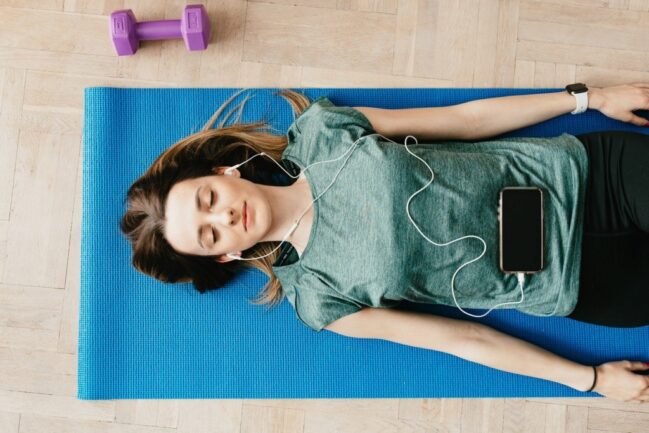Blog
5 easy breathing techniques for anxiety
January 26, 2022
3 minutes, 46 seconds
This article explores 5 different breathing techniques that might help with anxiety.

Anxiety can have a huge impact on all areas of your everyday life, impacting your social and professional life, as well as your relationships, friendships, and your general health and wellbeing.
If you suffer from anxiety, you will know just how debilitating it can be. Alternatively, if you know someone who suffers, you can learn how to help people with anxiety.
Anyone, regardless of their gender, age, or background can suffer from the effects of anxiety. Ultimately, the effects of anxiety are part of the “fight-or-flight” response, which occurs when an individual faces an emotional or physical threat. This can cause people to feel feelings of dread and distress, as well as a whole host of physical symptoms.
When this happens, many people report feeling breathless and unable to control their breathing as they normally would. The good news is that there are lots of breathing techniques that you can try to alleviate symptoms.
What are the symptoms of an anxiety attack?
The symptoms of an anxiety attack vary from person to person, but common symptoms include:
- Feeling tense
- Feeling nervous or fearful
- Worrying about the past
- Worrying about the future
- Insomnia
- Restlessness, irritability, and fatigue
- Hyperventilation
- Rapid breathing
- Indecisiveness
- Sweating
- Trembling
Here are five easy breathing techniques that should help bring your anxiety under control.
Resonance breathing
Also known as coherent breathing, resonance breathing can help prevent an anxiety attack from escalating, putting you into a calm and relaxed state.
This technique is easy to follow.
Simply lie down and close your eyes, breathing slowly in through your nose, with your mouth closed for 6 seconds. Then exhale for 6 seconds, ensuring that your breath leaves your body slowly.
The time it takes for your body to reach a relaxed state depends on the severity of your symptoms. However, the majority of people report this technique making a difference after 10 minutes.
Deep breathing
Deep breathing is one of the most common breathing techniques used to reduce and manage anxiety. It’s a technique that can be used anywhere, anytime. After all, people can experience extreme feelings of anxiety out of the blue.
This technique can be used while you are sitting, standing up, or lying down, and can really help to control your breathing.
Breathe in deeply through your nose and let your belly fill with air. Breathe out through your nose. Repeat as necessary.
Mindful breathing
Mindful breathing can also be incredibly helpful, helping people focus on the here and now.
To fully embrace this technique, sit or lie in a comfy position with your eyes closed or open maintaining a soft gaze.
Inhale deeply through your nose for three seconds, hold your breath for 2 seconds, then exhale through your mouth for 4 seconds. Keep your attention focussed on your breath throughout.
You can practice this technique until you feel calm.
Diaphragmatic breathing
You can practice this breathing technique by sitting up or lying down. It involves engaging the stomach, abdominal muscles, and diaphragm when breathing.
Basic diaphragmatic breathing is the simplest form of diaphragmatic breathing.
Lie down on a flat surface with a pillow under your head, and pillows beneath your knees, or simply sit upright. Place one hand on the middle of your upper chest, and the other on your stomach, just below the rib cage.
Slowly breathe in through the nose, drawing the breath down toward the stomach. You should feel your stomach push upward against your hand, while your chest remains still.
Then, tighten the abdominal muscles and let your stomach fall while breathing out through pursed lips. As before, your chest should remain still.
Practice this exercise for 5-10 minutes at a time.
Quieting response
Combining deep breathing with visualisation techniques, the quieting response is renowned for reducing stress and anxiety by helping people to relax the muscles in both their face and shoulders.
You can do this by taking a deep breath and imagining the breath as hot air entering the body through the soles of the feet. Now visualise the hot hair flowing up through your tummy and filling your lungs as you breathe in. When you are breathing out, imagine the air passing back through your body and out the soles of your feet. Repeat this until you notice a difference.
When trying breathing techniques, it can often be a case of trial and error, so don’t be disheartened if one technique doesn’t work for you the first time.
To find out more about how you can support people suffering from anxiety by becoming a counsellor or hypnotherapist, explore our range of counselling courses and hypnotherapy courses.